Home »
Misc »
How to increase hang time in basketball
How to increase hang time in basketball
The Physics of Basketball Player Hang Times
One of the most impressive parts of basketball is watching a player’s hang time. Not only do you want to see who can hang in the air the longest, but you also want to know how to get that long hang time. When you understand the science behind hang times, you can figure out how to increase your own.
Jumping
To understand hang time, you have to understand the importance of jumping. When you jump to take a shot, you can appear suspended in mid air at the high point of the jump. This illusion is a result of projectile motion. Projectile motion simply states that, when thrown into the air, an object, or in this case you, will spend the majority of the time at the top of the throw.
The higher you jump, the greater your hang time. Most players can jump a maximum of about 4 feet. Because gravity is a constant force and your vertical leap is not, your vertical leap, combined with the force of gravity, will change if you work at it.![]() You can increase the strength of your vertical leap by going through exercises with your coach or trainer that build strength and speed in your legs. These exercises include jumping straight in the air, jumping onto boxes or steps of various heights, speed work like sprinting, and strength training for your legs.
You can increase the strength of your vertical leap by going through exercises with your coach or trainer that build strength and speed in your legs. These exercises include jumping straight in the air, jumping onto boxes or steps of various heights, speed work like sprinting, and strength training for your legs.
Velocity of the Jump
There is more to your jump than simply the distance you travel vertically. You also have to take into account your takeoff. The takeoff is when you are running forward with the ball and then leap into the air. Because this is all happening so fast and you still are traveling forward through the air, the horizontal and vertical components happen at the same time, even though they represent two components of hang time. The horizontal component, or the distance you travel forward, does not change over time because it is not affected by gravity.
If you look at total hang time as an arc, or the top half of a circle, you spend half of your time in the top part of the arc, with the other half split between your takeoff and landing. As you increase the velocity and strength of your takeoff, you will be able to increase your hang time. Remember that your horizontal and vertical components happen at the same time; that is why it is represented by an arc. The shape of the arc changes as your takeoff changes. The more power you have in your takeoff, which represents both your vertical leap and the distance you travel horizontally, the high the arc will be and the longer you will appear to be in the air.
As you increase the velocity and strength of your takeoff, you will be able to increase your hang time. Remember that your horizontal and vertical components happen at the same time; that is why it is represented by an arc. The shape of the arc changes as your takeoff changes. The more power you have in your takeoff, which represents both your vertical leap and the distance you travel horizontally, the high the arc will be and the longer you will appear to be in the air.
The Science and Math of Hang Time
In order to calculate your hang time for basketball, use a combination of the laws of physics and mathematical equations. Newton's First Law essentially states that an object in motion will remain at motion unless acted upon by an outside force. This concerns you flying through the air. Newton's Second Law explains how an outside force changes the velocity of an object. Newton was able to put the second law in mathematical terms when the object, in this case you, has a constant mass.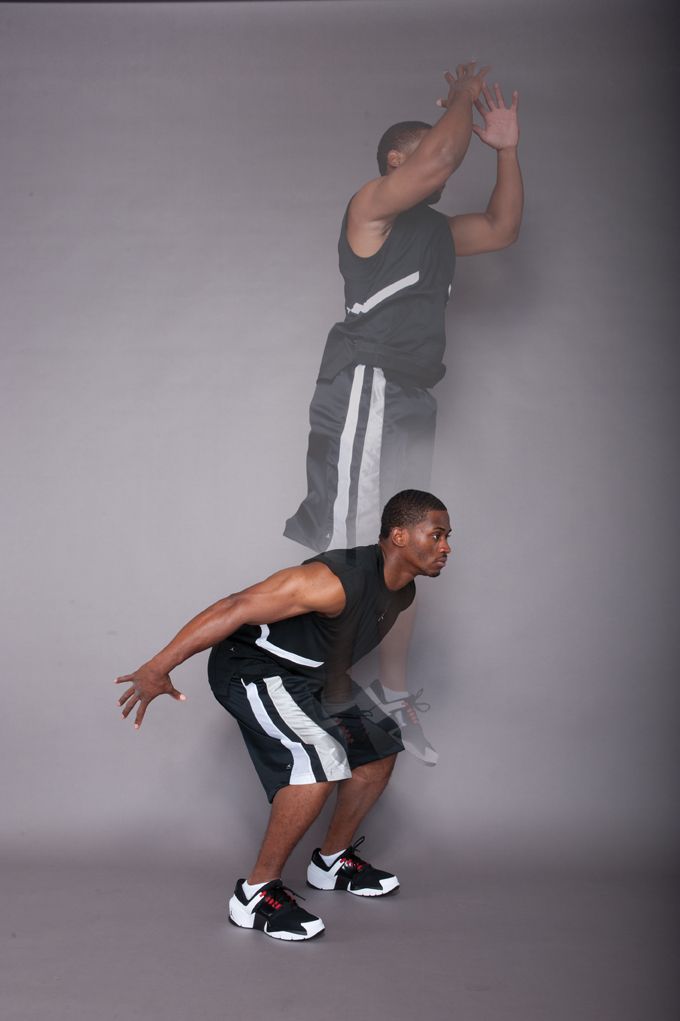 This equation is F = m x a, where “F” stands for force, “m” is mass and “a” is acceleration.
This equation is F = m x a, where “F” stands for force, “m” is mass and “a” is acceleration.
When you apply both laws to your hang time, it means that you will come down to the floor at the same rate you rose from the floor, assuming you don’t come into contact with anything. The outside force causing you to come back down to the floor is gravity, which is constant. The resulting force from your takeoff is your mass times your acceleration, or the combined speed and strength you used to launch yourself into the air.
Tricks for Longer Hang Times
Even Michael Jordan could hang in the air for only so long. The same laws of physics apply to you as well. To create the illusion of a longer hang time, try some of Michael Jordan’s moves: Hang on to the ball longer, then place it in the basket on the way down and pull your legs up as the jump progresses. Remember, all of this happens in about one second, and you spend only half of that second at the top of the jump, so make it count.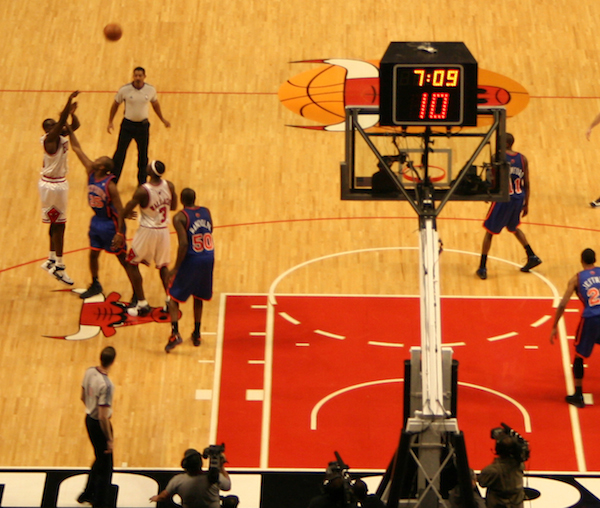
How To Jump Higher - The Answer Is Simple
Home > Player > Athletic Development > How To Jump Higher
You know it when you see it. The player in the gym with the Ups. Hops. Spring. It's hard to take your eyes off of him or her. Zion and Ja can get off the ground in a way that makes you sit up and take notice.
The high flyers are awe-inspiring and can impact the game with an offensive tip, a block from behind, a swooping lay-in (or a dunk, of course).
But there are also a large number of players who get everything they can from their ability and use it to be a more effective player in other ways...
Great rebounders aren't always the highest jumpers. They typically have the ability to time their jump, get back off their feet quickly and explode off two feet. Great finishers can throw off the shot blockers timing with a quick jump offer either foot or they "hang" in the air with body control and take physical contact.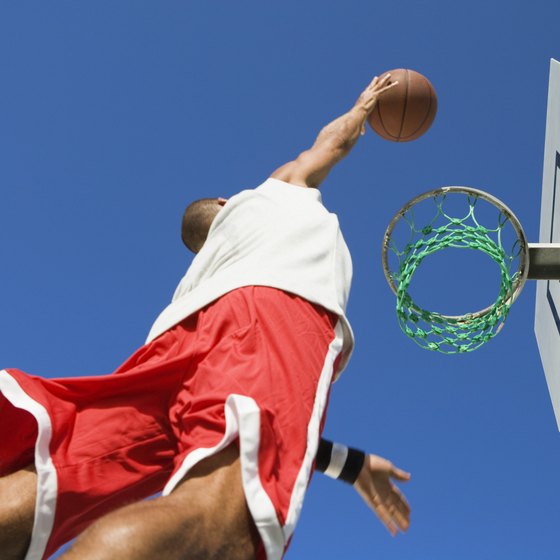
So while jumping higher should be one part of your ongoing athletic development, don't get hung up on vertical leap as the most important goal.
The key is thinking about how to impact your overall athleticism.
The good news is that it doesn't have to be complicated to really improve your overall athletic development and specifically, your jumping ability. Becoming a better athlete overall will include maximizing your hops.
Start With a Plan and Some MeasurementsThe key to building long-term vertical gains is having a plan and taking it, literally, one jump at a time.
Think through the type of game that you have and how jumping plays a role in it...
More lift for more range on your jump shot? Finish in traffic? Get off your feet quickly for tips and rebounds? Shot Blocker? All of it?
Maybe it's a visual or a milestone. Touch the net, touch the backboard, and the HOLY GRAIL.. Touch The Rim. Then two hands on the rim and maybe, just maybe, a full-on throw down.
But don't see this goal as one Zion-sized leap, you're going to get there by being smart about it first and breaking it up into smaller goals.
In order to create some goals, we need to measure your vertical. We need a baseline, so to speak. You won't be able to know how you're doing unless you know where you started.
Vertical Jump Test (How to Measure Your Vertical Jump)Some basic measurements are Standing Reach, Standing Vertical Jump and a Rapid Jump test.
Standing ReachBefore you measure, warm up. Stretch. Get your heart rate up. Do some layups. Take some jumpers.
Then measure yourself with feet flat standing next to a wall in sneakers.
Now standing sideways with your right shoulder touching the wall, reach as high as you can with your right arm while keeping your feet flat. Mark that spot and measure the height. Do the same for the left side.
The difference between the two numbers is your Standing Reach. According to hoopgeek.com, based on college and professional draft measurements, the average standing reach should be about 1.32 to 1.35 multiplied by your height.
According to hoopgeek.com, based on college and professional draft measurements, the average standing reach should be about 1.32 to 1.35 multiplied by your height.
Example: A 6 ft tall person (72 inches) should have a standing reach around 95 to 97 inches or about 8 feet.
Now remember, these are averages and baseline numbers, you are still growing, these numbers won't remain intact until you've reached full growth. But this will give you a sense of how long your arms are.
Standing VerticalIf you don't have a measuring machine for vertical jump available then you can do the wall test.
Same thought of standing next to a wall. You might want to put some chalk on your hands or use something you can stick against the wall.
Start from a knees-bent position. Leap off two feet. Touch the wall. Mark the spot and measure it. Try a few times to get the best one. Swing your arms to get lift. The key is to do it from a truly standing position, no steps at all.
The difference between where you touched the wall on your jump and your standing reach is your vertical jump.
According to the book "Norms for Fitness, Performance and Health", the average vertical jump for 13-14 year old boys is about 17 inches.
Rapid JumpAnother critical jumping ability in basketball is getting off your feet quickly. You can do a rapid reaction test to see where you stand.
Pick a spot against the wall or on the backboard or the net. If you have access to something measured, use that. Pick a spot that is about a foot above your standing reach.
Time yourself and see how many times you can touch that spot (if you miss, it doesn't count) in 15 seconds. That is a simple "Bounce" test. Once you start to develop, these measurements can become more in-depth. For now, keep it easy.
Keep track of those measurements because now it's time to start building.
Change The Way You Think About Training
If you've read this far, you're interested in being a better athlete. Good for you. What's been a point of emphasis so far?
Good for you. What's been a point of emphasis so far?
Start with your mind set. Developing serious Ups will take some time, but it can be done. But you won't get there without taking that first leap of faith and know that starting with the basics will get you on a poster (maybe!) down the road.
Do you know that Ja Morant tire story? When he was in high school, he was only 5'7". His father, Tee Morant, got a tractor tire and created a jump drill with the tire. Tee said that after starting the tire drill, "(Ja's) bounce got crazy."
The key for Ja was that it was PART OF HIS TRAINING. He did the tire drill after EVERY OTHER DRILL. Point is you don't need sophisticated equipment or jumping off 4 foot boxes yet. What you need to do is focus on how you "train" as an athlete.
The fact of the matter is that jumping higher won't happen overnight and it can be a mistake to try to make gains too quickly.
Cody Roberts, an athletic development expert and currently the Assistant Strength and Conditioning Coach at the University of Iowa, believes an athlete's desire to see fast results can lead to a bad outcome.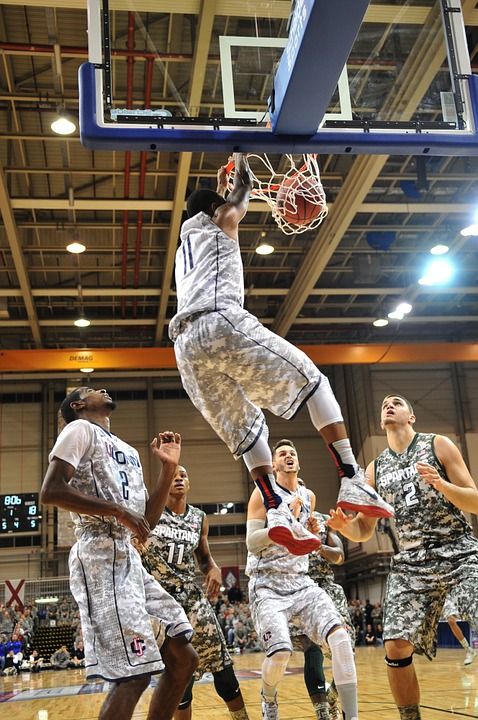
Roberts says avoid doing "too much, too soon" and dedicate time to training correctly first.
"Progression is important," Roberts said. Dynamic stretching, proper breathing and warm up and then moving towards increased load and resistance will provide the right foundation. Start with lower impact exercises to experience gains and then add increasingly more challenging exercises.
Roberts encourages his athletes to understand that muscular development shouldn't be the only focus. It's also critical to have the other infrastructure of the lower body - tendons, ligaments, etc.- be ready for growth.
He suggests using movement efficiency and coordination as the foundation of your program.
Here's a Secret: It's Simple to be a Better Jumper
The simple answer to "How Can I Jump Higher" is to build strength.
Physics tells us that it all comes down to force and energy.
According to breakingmuscle.com:
How do you actually go about jumping higher? The answer is in two parts:
- Increased force output - How much strength or energy can be applied to the ground
- Increased rate of force development - How quickly force can be produced and applied
The combination of these two is what allows someone to propel him- or herself from the ground to as high as possible.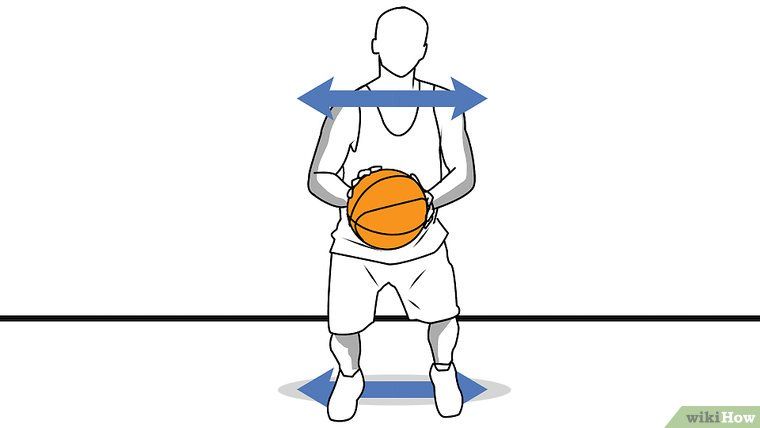
Why Do College Football Players Typically Jump Higher Than Basketball Players?
That's right. Football players consistently outperform basketball players at draft combines in the vertical leap measurement. How? Again it's simple. Lower body strength is critical to create leverage and power.
Jumping higher is connected directly to the strength and conditioning of your entire lower half, including your core, hips, glutes, and legs.
A key, according to Roberts, is increasing "force production".
Focus On Force Production
According to sportandresearch.com, force production is the key to all sporting movements. Force will be greater if we have prepared the ability to produce it in the way that it is exerted during the exact sporting movement that we are trying to improve. Many sporting movements, like jumping, involve force production while muscles are lengthening, while they are contracting very quickly, and also while they are producing peak force at short muscle lengths.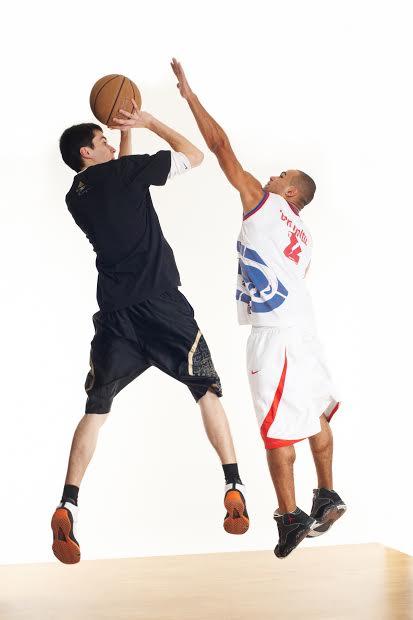
Exercises To Jump Higher and Improve Force Production
Here are a few examples of exercises that build strength that translates into explosive jumping ability.
Warming Up Is Not A Waste Of Time
Engines need to warm up. So do human beings. Start your routine with an effective set of stretches and warm ups that get the body ready to maximize results.
Base Warm Up
It is important to properly warm up prior to every work out with a dynamic base warm up. This will get your core temperature up and get your body ready for an intense workout. You should perform 5-10 reps of each base warm up activity.
Lunge and Contralateral Reach Warm Up
This series begins with a transverse squat. The athlete works both up, across, and down motion. Your legs are wide and you work both right and left legs.-Step-5.jpg/aid43486-v4-728px-Play-21-(Basketball)-Step-5.jpg) 5 reps each exercise.
5 reps each exercise.
Spectrum legs
This series takes the athlete through several different loaded or body weight squat exercises. They work on proper foot pressure. Spectrum leg series will help the athlete as they get stronger and prepares them to jump higher.
Medicine Ball Series
The med ball series focuses on movement of the hips through a full range of motion to help make the athlete more dynamic. A dumbbell or plate can be substituted for a med ball in this series.
Box Drops
For this exercise you begin on a 12'-24" box, depending on the comfort and ability level of the athlete. The exercise is part of the force management series and helps prepare the athlete with solid base to explode into their jump.
The exercise is part of the force management series and helps prepare the athlete with solid base to explode into their jump.
Box Jumps
Box jumps develop help develop explosiveness in jumping. The athlete should explode as high as possible. They "stick" the landing with hands back, hips back, ready to explode off the ground again.
Jump Rope Series
Jump rope series adds variety to lower leg conditioning. This is great for fast twitch muscle development as well.
Single Leg Squat
A great exercise that help build strength and stability for the lower body, working one side at a time. This exercise helps strengthen smaller individual muscles on each side of the body. This can help prevent injury down the road.
This exercise helps strengthen smaller individual muscles on each side of the body. This can help prevent injury down the road.
Front Plank with Hip Extension
The front plank with hip extension with help improve hip stability and strengthen the glutes. This will result in reducing the stress and strain on the knee.
Final Thoughts on Jumping Higher
These will get you started. The key is start now but start smart. Take some time to plan and then some time to measure. Use exercises that you like doing and think "whole body". Think about your game - one foot, two foot.
Don't try anything that would risk injury as a quick fix. Build your power the right way. Then see yourself hang in the air in traffic and finish off the layup with contact. That's a baller.
Build your power the right way. Then see yourself hang in the air in traffic and finish off the layup with contact. That's a baller.
For more exercises to jump higher and complete 12 week workout program, check out the Cody Robert's Athletic Development System.
Basketball coaching hacks: how to score goals for beginners
Even if you are a novice basketball player, we will not give you a training plan, but we will tell you why the ball flies anywhere but into the ring and into your hands. It's all about technique: even with regular training and perseverance, novice adults and children often make simple mistakes. It's a shame, let's fix it. Below are 11 life hacks on how to hone your technique to increase the likelihood of a goal for your team.
Basketball Shot Rules for Beginners
1. Hands up
In pursuit of the attacker, raise your hands, even if you are standing with your back to the pass, and even more so if the ring is in front of you. Your raised hands will increase the chance of intercepting the ball from the opponent by 2 times. Don't overlook this little thing!
Your raised hands will increase the chance of intercepting the ball from the opponent by 2 times. Don't overlook this little thing!
2. Make shield rolls
Even Tim Duncan did not neglect them! A square is drawn on the basketball backboard. If you are standing opposite the ring, then aim at the middle of the upper part of the square, if you are standing on the side, then at the corner. If you hit this square, then the ball is at 90% of cases will fall into the ring. The law of physics and no cheating!
3. Look at the ring, not at the ball
Practice driving the ball with your hand, not your eyes, develop tactile control. Your eyes should be on the hoop while dribbling and be aware of the position of your body in relation to the hoop. Then you will be able to take the correct posture, and the throw will be effective.
4. Dribble with the balls of your fingers only
The palm should not touch the ball, only the pads of the fingers.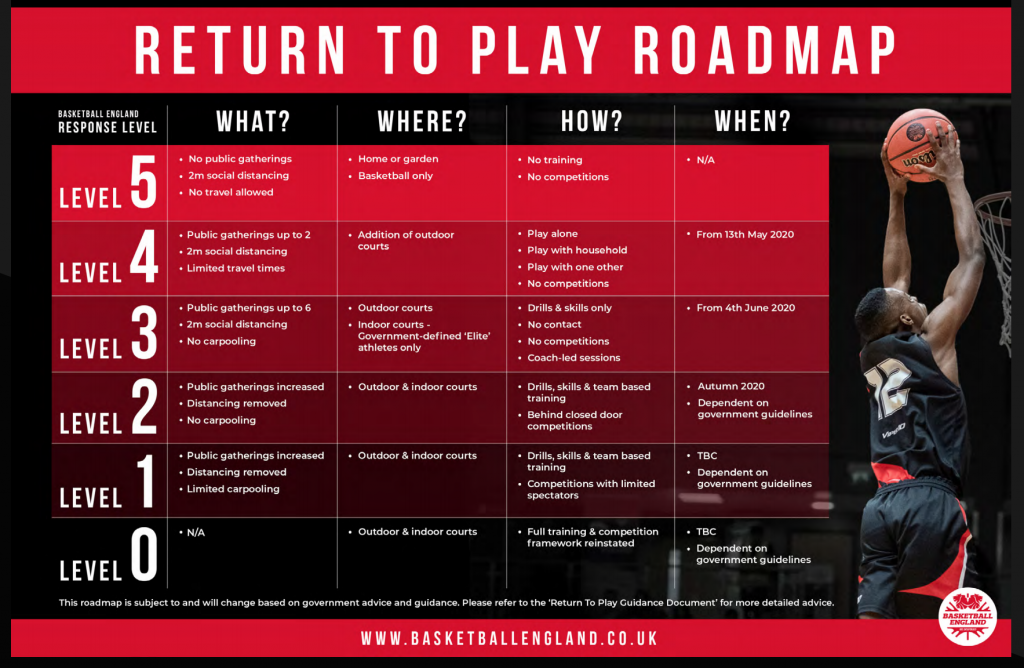 Dribbling should become familiar to you, like an extension of your hand. Then you can change its trajectory at any time and you will have more chances to score goals. Practice with the ball constantly.
Dribbling should become familiar to you, like an extension of your hand. Then you can change its trajectory at any time and you will have more chances to score goals. Practice with the ball constantly.
5. Throw with one hand
If you throw the ball with two hands, you reduce the chance of hitting the basket. All the efforts of the throw are in one hand (in the right for right-handers, in the left for left-handers). The other hand only holds the ball, the leading one holds it with the fingers, not the palm.
6. Do not jump when protecting the ring
Jumping is the main mistake of rookie defenders. To intercept the ball and block the shot, simply stick out your hands. When you are in a jump, the attacker will easily bypass you.
7. Don't look back
When you dribble, don't look back, but dribble and aim for the ring, focus on shooting (or passing to another player on your team).
8. Bring the throw to automatism
Incorporate the most basic basketball techniques into your training plan and bring the shot to automatism. Throw first from a distance of half a meter from the ring, gradually increasing it. Learn to throw the ball so that it hits the hoop without touching the edge.
Throw first from a distance of half a meter from the ring, gradually increasing it. Learn to throw the ball so that it hits the hoop without touching the edge.
Throw the ball with all fives and jump
Throwing Rules:
- Head in the center of the body - if tilted, accuracy is lost.
- Look at the ring: mentally build a trajectory. If you are far away, the ball flies in a curved curve with a maximum height of 2 meters above the hoop.
- A strong hand is in front and throws, a weak hand is on the side and directs, only holding the ball. The elbow of the throwing hand must be in line with the ring.
- The ball must rest on the fingers without touching the palm. The fingers are as far apart as possible and grab the ball.
- Throwing arm bent 90 degrees, forearm perpendicular to the floor. If you bend less, then you get not a throw, but a throwing of the ball horizontally.
The main thing in the throw is the position of the body and its balance. Place your feet apart and parallel to each other: it is important to orient them in the middle of the basket. Then the direction of the body during the jump will coincide with the direction of the throw, and the ball will fly straight into the ring. When the feet are uneven, the ball flies in the wrong direction or does not reach (although the throw was normal).
Place your feet apart and parallel to each other: it is important to orient them in the middle of the basket. Then the direction of the body during the jump will coincide with the direction of the throw, and the ball will fly straight into the ring. When the feet are uneven, the ball flies in the wrong direction or does not reach (although the throw was normal).
Take a deep breath and release as you exhale.
How to hold the ball and shoot in basketball
How to throw correctly: straighten your arm, point your wrist up, and with your hand set the ball to rotate in the opposite direction from the flight. The ball should seem to "roll" off your fingers.
9. Copy masters and play as a team
Watch professional basketball games and try to copy the movements of your favorite players in training. And be sure to conduct game sparring - this will allow you to develop more techniques.
10. Do not throw in a straight line
The higher the arc of the ball, the greater the chance of a goal and the less chance of blocking by the opponent.
11. Do not throw the ball from a full height stand
This is the biggest newbie mistake!
Before the throw, bend your knees slightly and at the moment of the throw, straighten your body, making a jump. You need to straighten up and push off the ground at the same time. When squatting, keep the elbow of the throwing arm close to the body and towards the ring.
The jump will give momentum to the ball and will allow you not to make sudden movements with the brush.
***
And to be a long-term player, do not forget about your health: take care of your joints and muscles, use tapes, do a warm-up. And be sure to strengthen your arms, legs and shoulder girdle, develop coordination. Regular exercises on uneven bars and horizontal bars will help you with this.
Learn how to throw the ball correctly in basketball: throwing technique
Everything is important in basketball: dribbling, passing, tackle. But all this is not enough if there is no effective finishing blow to the ring. It is the final score that determines the winning team. There are plenty of stars in the NBA who don't rely on conventional shooting techniques. These are Rick Barry, Joaquim Noah, Sean Marion and others. But then they are stars. We will try to figure out what really attracts basketball, how to throw the ball into the ring correctly.
It is the final score that determines the winning team. There are plenty of stars in the NBA who don't rely on conventional shooting techniques. These are Rick Barry, Joaquim Noah, Sean Marion and others. But then they are stars. We will try to figure out what really attracts basketball, how to throw the ball into the ring correctly.
What the beginner needs to know
Throwing techniques should be mastered at an early stage of training. If you do not pay enough attention to this, you will have to relearn, and this is always more difficult. Accuracy directly depends on the technical component, which must be brought to automatism. Stability allows you to gain confidence, courage and the ability to resist the enemy.
Training starts from a short distance - one and a half to two meters. You can use additional equipment by performing throws from a sitting position and standing on a chair. After the young player learns to accurately hit the target without touching the arches of the ring, the distance should be increased.
One of the most contact sports is basketball. How to throw the ball into the ring, if you do not take into account the actions of the defenders? That is why you should practice hitting:
- in game pairs or triples of players;
- in conditions of passive and active resistance of the enemy;
- in a state of fatigue or psychological stress.
Types of shots
Fans of spectacular ball games know that players can throw with both two and one hands. In the course of a match of any professional club, you can see how the attackers do it from a place or on the move. They score after passing, faking, jumping, sometimes flying over the backboard above the basket and pushing the ball from above. The legendary Michael Jordan, who did this especially spectacularly, was even nicknamed "His Airiness".
Depending on the distance to the game board, throws are divided into long, medium and close. The latter are carried out at a distance of up to 3 m from the basket. The indicator of a long-range shot is a mark of 6.25 m, after which the team is awarded not two, but three points for each hit.
The indicator of a long-range shot is a mark of 6.25 m, after which the team is awarded not two, but three points for each hit.
How to learn to throw the ball in basketball into the hoop from different positions? To do this, you need to master the technique of basic throws. There are six of them:
- From below with two hands.
- From below with one hand.
- Standing with both hands.
- Standing with one hand.
- Jump shot.
- Hook throw.
Throwing from below
How to throw the ball in basketball from below? Let's take a look at the player's stance first:
- Foot placement: shoulder width position. It is not necessary that both feet are on the same line, the left or right can be slightly pushed forward. The legs are slightly bent at the knees. Both socks are directed towards the ring. Body weight is distributed evenly over the balls of the feet. The heels touch the floor, but do not press against it.

- Body: back straight, shoulders back, elbows relaxed and slightly bent. The head is raised, the player's gaze is directed to the basket.
- Grip the ball: only with the fingers. The palms do not participate in the throw. The ball is held below the belt line at a fairly close distance to the body. The thumbs are directed towards the basket, the rest are looking down.
Movement during hit:
- If a player is taking a free kick, a preliminary movement is often used. During it, the ball rises to chest level, and the legs straighten, after which the basketball player takes the starting position and begins to throw at the same pace.
- The ball again rises up and forward while straightening the legs. As soon as the arms become parallel to the floor, the player releases the ball with the fingers and hands, giving it a reverse rotational motion. At the same time, the hands seem to accompany the throw, the back is straight, the heels come off the parquet.

With one hand, players score exclusively from under the basket during the fight at the backboard. In this case, the ball is given spin, which the attackers must take into account when preparing to hit the target.
Throwing from the spot
When beginners ask how to throw the ball in basketball from the head, you need to understand that we are talking about hitting from a place. Such a throw is performed from two positions, the second - from the chest. This technique is used when you need to hit a target from a long distance. What is its fundamental difference?
Let's consider the throw from the head. As in the first case, the player must take a stable position, lifting the ball to a level just below the chin. It must be kept at a distance of 30 cm from the body. The elbows are pressed to the body. The throw is performed with the simultaneous extension of the arms and legs. The ball is given rotation with the thumbs along the trajectory up and down.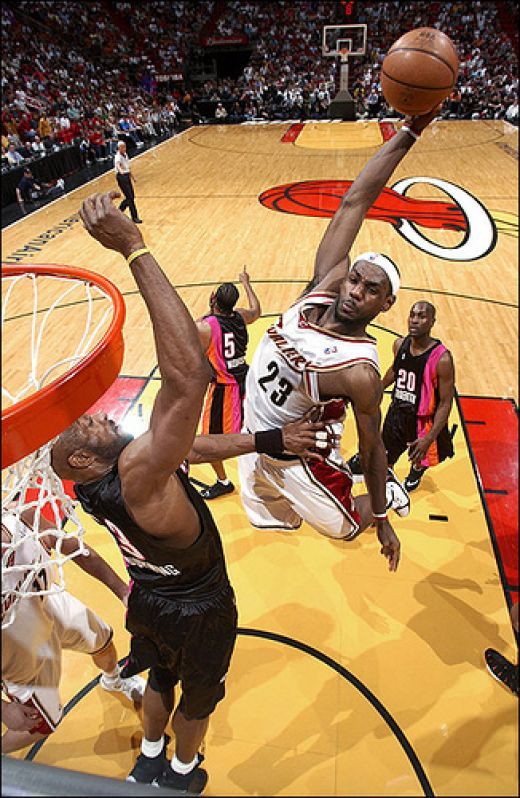 As a result, it will fly towards the target with reverse rotation.
As a result, it will fly towards the target with reverse rotation.
When throwing with one hand, remember that the height to which the ball is carried is determined by the player himself. If he is attacked by a defender, then his chances are increased if he is able to throw over his head.
In a jump
This is the most difficult element of the game, in which it is most difficult for the defender to repel the attack. He needs to predict the actions of the sniper in order to block. Not all professionals know how to throw in a jump. It is used at close range from the ring, although there are legendary athletes who hit the target from the eight-meter mark.
What is the correct way to throw the ball in basketball if there is an opponent in front of you? The answer is unequivocal: in a jump.
The player is pushed off with both feet, both from the spot and with the body turning in the direction of travel. The throw involves not only fingers, hands, but also hands.